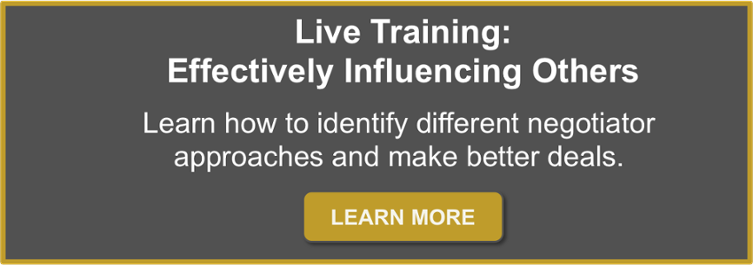
My last article in The Edge called “The Problem with Tell Me More” left a few people asking “What do you say instead?”. This article is meant to give some insight on how to change your approach and make your communication efforts more influential. You can also find out more about the ideas I am going to share here, in Chris’s book “Never Split the Difference” Chapter 7.
So, what do you use instead of “Tell Me More”?
Simply put, the answer is Calibrated Questions. These are targeted questions that start with what, how, and sometimes why. We at Black Swan actually make it a point to never ask a question that doesn’t start with one of these. That means cut out all questions that start with who, where, when, and which.
There are 3 main reasons that calibrated questions make your negotiations more efficient.
1. You collect more information.
The main reason being that what and how questions always incite a much more elaborate answer from the counterpart. My personal favorite is how questions, it just always seems to open people up. In a very subtle way it not only encourages their participation in the solution process, but begs for it. Questions that start with who, where, or when only require short and concise answers. When you are engaging in an information gathering process where you want a counterpart to “vomit information” conciseness is an enemy.
2. You give the illusion of control.
There is also a powerful aspect of giving the illusion of control in negotiation and the importance of turning your counterpart into your problem solver. When you are implementing a solution what you really want is genuine buy-in from the other side. Commands like tell me more about X do not put your counterpart in a position to solve the problem for you. Questions like How do you propose we move forward in the most productive manner? or How does this affect things? automatically imply that we are on the same team and need to continue to row in the same direction.
3. You bring together the other side.
Additionally, something that we always have to factor in but sometimes forget, is there is always a team on the other side. The individual(s) in front of you do not always represent, or are even aware of, all the issues that need to be solved. It is key to ask questions that cause them to come together behind the scenes and make sure they also have a unified front. More important than dealmakers are deal killers, and chances are the deal killers are not at the table but still need to be influenced. There are many different points of view and ways of looking at things, in the negotiation if you don't get them all on the same page your efforts will be fruitless - something that we also refer to as “proof of life of the deal”. Some Fortune 500 companies that are willing to admit up to 50% of their deals get killed internally. Knowing a stat like that it is always important to figure out how to not fall into that bin of failed agreements.
In closing use what and how questions as much as you can. Not only will you get more thoughtful answers but you will cause your counterparts to get together as a team to make sure they answer the question correctly. Calibrated questions are a great way to get their team unified.

